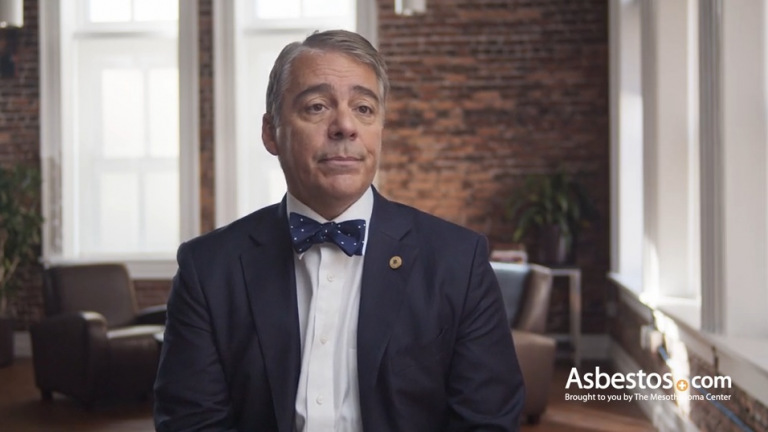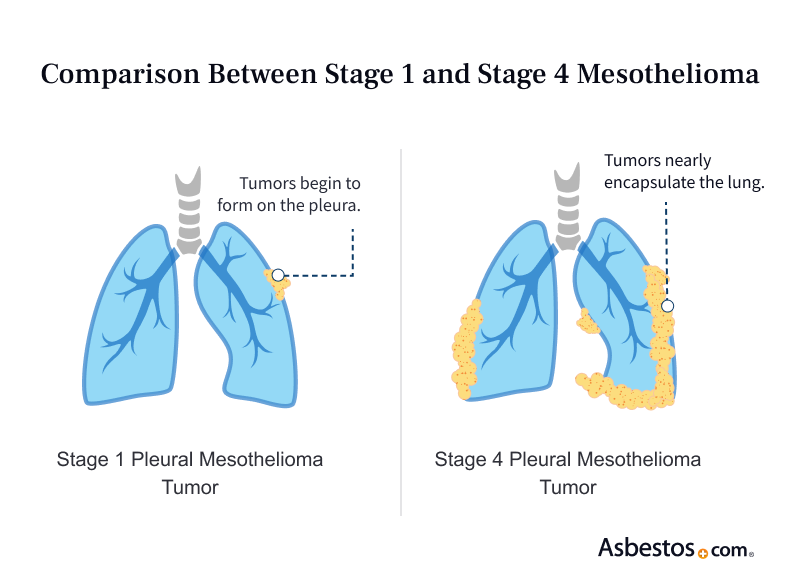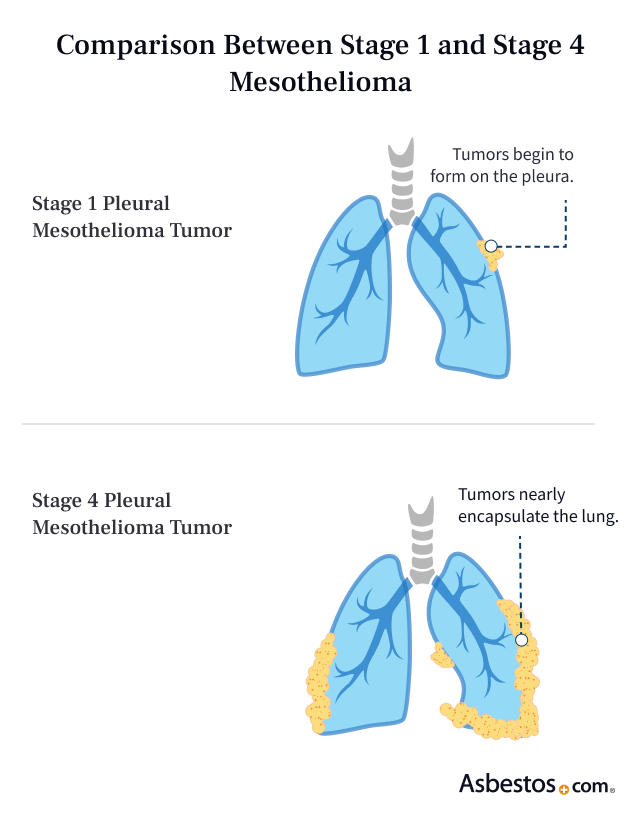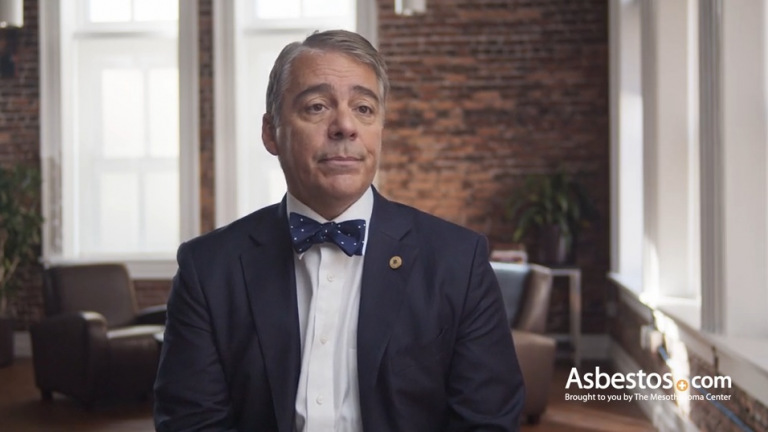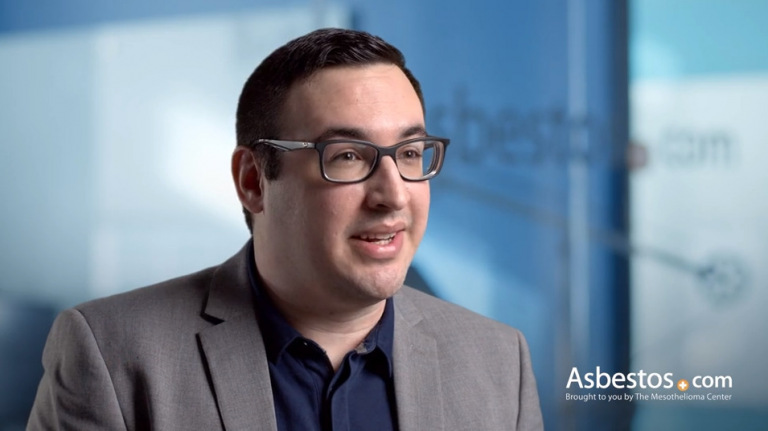Mesothelioma Life Expectancy Without Treatment
The mesothelioma life expectancy without treatment for a late-stage patient is approximately six to eight months. Patients diagnosed with early stage mesothelioma may live one to two years. Factors such as the cancer’s stage, treatment, cell type and the patient’s overall health impact mesothelioma life expectancy.
How Long Do Mesothelioma Patients Live Without Treatment?
Patients in stage 1A mesothelioma live an average of two years without treatment. Those with stage 4 mesothelioma live an average of six to eight months without treatment. In contrast, multimodal treatment with surgery may extend survival by years.
Treatment options for peritoneal mesothelioma can extend survival by five years for about half of patients who receive surgery with heated chemotherapy. About a third of people with a malignant mesothelioma tumor choose not to receive anti-cancer treatment.
Survival varies on several other factors. These include tumor grade, general health, age and gender. Another factor is whether the patient elects palliative care, which can control symptoms and improve quality of life.
Mesothelioma patients who opt not to pursue treatment may elect palliative care to improve their quality of life and manage their symptoms effectively. Palliative care specialists work closely with patients to address their needs and concerns. They provide an approach to care that prioritizes comfort and well-being.
What Happens if Mesothelioma Is Left Untreated?
Untreated mesothelioma grows and spreads faster than with treatment. The rate of growth depends on the cancer stage and location. Some patients have a slower form of cancer, but most mesothelioma cases are rapid. It’s also likely a slower cancer can enlarge and spread without a change in symptoms.
The thought of spending the days I have left running between doctors and hospitals for treatment just didn’t appeal to me. I’ve seen what chemo can do. If I would have been 20 years younger, then yes, I would have tried it but not at my age. I’ve just tried to ignore it and keep on moving as best I can with a positive attitude.
Certain factors may improve prognosis. Younger women with an epithelial cell type tend to live longer. Good general health can also improve prognosis. Regardless, survival is worse for most people who turn down treatment.
Tumor Growth Affects Symptoms
Without treatment, pleural mesothelioma tumors spread from the lung lining to the rest of the chest cavity. Tumor growth will cause symptoms that affect how patients feel. As they grow, chest pain, shortness of breath and coughing often worsen.
Peritoneal mesothelioma also progresses without treatment. Symptoms in the abdomen will likely get worse. These include abdominal pain, swelling and digestive issues.
Other symptoms can also occur in both types. These are weight loss, fever, night sweats, fatigue and hoarseness. Cancer can also cause high platelet and calcium counts and low sodium levels.

Anti-Cancer Treatment Versus Palliative Care
You may decide you don’t want standard cancer treatment for mesothelioma. In that case, you can still consider palliative care. This type of care manages mesothelioma symptoms. It aims to keep patients comfortable as a top priority.
Some patients live longer by managing symptoms and improving general health. These options are available even when a patient turns down traditional cancer treatments.
Most palliative options use standard cancer therapies. They are often much less aggressive. Palliative therapies focus on tumors that are causing the worst symptoms. These include surgery, chemotherapy and radiation therapy. Other options include pleurodesis, thoracentesis, pain medication and physical therapy.
These therapies do not target tumors. They can improve general health and may boost the immune system. It’s vital to start palliative care therapies as soon as possible. They can help maintain quality of life and let some patients live longer.
Managing Pain with Palliative Care
Some people are reluctant to take pain medicine because they have fears about potential side effects and becoming addicted. Palliative care specialists have extensive experience helping people manage pain with medication and know side effects can be controlled.
Addiction is rare and shouldn’t be a concern for most people with mesothelioma. It’s more important to keep pain to a minimum, so patients can enjoy a higher quality of life. Opiate-based pain medicine, such as morphine and tramadol, are effective at controlling cancer-related pain. Certain antidepressants help to reduce pain, while steroids can reduce pain caused by inflammation.
There’s still a lot of confusion about what palliative treatment is versus hospice care. I find it important to explain what palliative care is and how patients typically do better integrating it early on rather than waiting.
Over-the-counter pain medicine, including NSAIDs such as ibuprofen, is helpful for mild to moderate pain. Be careful taking NSAIDs on your own because they can easily damage the stomach’s lining and cause ulcers if taken for too long or in combination with alcohol.
Other palliative care treatments enable patients to live fuller lives. Complementary therapies, such as occupational therapy, help patients engage in activities, while physical therapy helps people feel better in their bodies. Ask your doctor for a referral to a palliative care specialist if one isn’t available at your treatment center.

Studies on Survival Without Treatment
Most studies focus on how treatments can improve mesothelioma survival rate, so there is little research regarding survival in untreated patients. This type of research enhances doctors’ understanding of the natural progression of mesothelioma.
Survival Without Treatment:
- The 2019 study published in Thoracic Surgery that reported about a third of mesothelioma patients receive no treatment also reported their survival rate. Of the 3,419 mesothelioma patients included in the study, 31.1% decided against receiving treatment, and their overall survival was 10.2 months.
- An MD Anderson study reported on mesothelioma cancer life expectancy for untreated cases in 2011. The study reviewed survival in 238 cases of mesothelioma diagnosed between 1977 and 2009. The average survival for untreated patients was 6.4 months. Treated patients lived an average of 11.3 months.
While some patients may experience slow disease progression and longer survival without treatment, the majority cope with quick disease progression within a relatively short timeframe. Continued research in this area may identify factors associated with better outcomes in untreated cases, offering potential avenues for investigation and therapeutic development.
Tumor Grading and Life Expectancy
In 2011, a study published in Modern Pathology reported on a prognostic factor known as nuclear grading, or tumor grading, in pleural mesothelioma patients with epithelioid tumors. This study did not report on untreated patients but included a prognostic factor that can be used to estimate how fast a tumor may grow and how well it will respond to aggressive treatment.
Tumor grading is measured by factors such as cell abnormalities and how rapidly the mesothelioma cells divide. These factors are associated with survival and response to treatment, which can help doctors identify the best patients for aggressive treatment.
Tumor Grades and Survival
- Grade 1 average survival is 28 months
- Grade 2 average survival is 14 months
- Grade 3 average survival is 5 months
Patients with a low tumor grade tend to respond better to treatment and live longer, which makes them great candidates for anti-cancer treatment. Patients with a high tumor grade are unlikely to respond well to treatment, which means they may benefit less. You can talk to your doctor about whether your pathology report included tumor grading to weigh the risks and benefits for your personal case.
Making Decisions About Treatment
If you’re on the fence about treatment, you may consider waiting three months until your next imaging scan, which allows your doctor to assess how quickly the mesothelioma is growing.
Knowing how fast it is growing will help your doctor provide a mesothelioma prognosis that is specific to your individual case. It will also help them decide whether trying chemotherapy makes sense after waiting to observe the growth rate. During the three-month waiting period, patients can consider seeing an oncology dietitian or an integrative oncologist to access complementary therapies that may boost the immune system.
- Even though it may seem hard to express your concerns, it is best to tell your doctor what you are worried about.
- Some doctors may push aggressive treatment because they have a goal to provide patients with more time.
- Your doctor can address your specific fears and concerns, and explain the strategies they can use to limit or avoid certain side effects.
- If quality of life is your primary concern, your doctor can closely monitor your response to treatment and make changes along the way to ensure you don’t experience unwanted side effects.
Making decisions about mesothelioma treatment may feel scary or bewildering. It can feel hard to understand the risks and benefits of treatment while facing fears about having cancer.
Consider writing down the questions and concerns you have about electing treatment or foregoing treatment. You may have to ask yourself some difficult questions such as, “Am I OK with having a shorter life expectancy if I don’t receive treatment?”
Survivor Sallie M. Lived for Years Without Anti-Cancer Treatment
When Sallie Morton was diagnosed with pleural mesothelioma at the age of 87 in June 2013, her doctors advised against aggressive treatment. They said the cancer was too progressed for surgery and that Morton was too advanced in age to withstand the health effects of chemotherapy. She had a talc pleurodesis to stop fluid from building around her lungs, and it offered great relief for her breathing difficulties.

After 22 months of hospice care, it became clear she was stable. Morton left hospice and continued living in an active retirement community in southern California. She had a scan of her lungs done when she left hospice, just to see how things were looking. Only a few tumors were found around her lung. It seemed she had a very slow-growing type of mesothelioma.
Without any anti-cancer treatment, she lived for four years with mesothelioma. Mesothelioma didn’t stop Morton from enjoying her life. She managed the symptoms and took time to travel along the California coastline, staying beachside, and appreciating the state’s landscape and pleasant weather.
“Thank you No. 1 for the talc pleurodesis, and No. 2 for not pushing treatment on me. I got to travel as a result,” Morton said in 2015.
Recommended Reading


